
In many ways, Saturn’s moon Titan is one of the more pleasant places you could take a stroll in our Solar System. It has a solid surface, for one thing, even if it’s a surface of hard ice speckled with lakes of gasoline-like hydrocarbons at a frigid 94 Kelvin, or around minus 290 degrees Fahrenheit.
“But you're not in a vacuum,” Elizabeth Turtle tells Inverse. “You’re in an atmosphere just a little denser than ours, and you’re not in a radiation environment the way you are with a lot of the other bodies in the Solar System.”
Because of this dense atmosphere, NASA can do something only possible on a handful of worlds: take flight. Turtle, a NASA planetary scientist and principal investigator of the upcoming Dragonfly mission to Titan, wants to take advantage of the unique atmospheric properties of the cold moon to fly a drone-like probe there. Once it tentatively arrives in 2034, Dragonfly will spend three years flitting about the icy moon and doing the kind of science that, to date, has only been done on Mars.
Why Titan? Its kerosene-like lakes and icy landscape contain the right mix of water, energy, and complex carbon molecules, making it similar to primordial Earth, making it a great place to study the prebiotic origins of life there. That is, if we don’t find that life itself has already arisen there.
“Dragonfly is really designed to answer very fundamental questions (of) what makes a location habitable,” Turtle says.
What is the NASA Dragonfly launch date?
NASA has yet to determine the launch vehicle that will carry Dragonfly to space, but it is currently scheduled to launch in June 2027. The cruise vehicle will deliver Dragonfly to Titan in 2034.
The mission was originally scheduled to fly in late 2026, but NASA rescheduled the launch in September of 2020, citing the Covid-19 pandemic’s impact on the planetary science division’s budget.
How much will NASA’s Dragonfly cost?
NASA has projected Dragonfly will cost $850 million, a sum that excludes the mission’s launch and operations.
Why is NASA sending the Dragonfly mission to Titan?
Titan is an unusual world. It’s far colder and darker than Earth and almost 800 million miles away. Its rhythms are absurdly slow by Earth standards, with a Titan day clocking in around 16 Earth days and its orbit around Saturn lasting almost 30 Earth years. Each season stretches out to around seven Earth years long.
But despite these differences, Titan possesses many very Earth-like features:
- Both Earth and Titan have hard crusts, though Titan’s is composed of water ice rather than rock
- Both worlds boast thick atmospheres composed mostly of nitrogen, but the balance on Titan is primarily methane rather than oxygen, as on Earth
- Both have liquid on the surface and precipitation in the air, but these, too, are primarily based on methane. “So there are methane clouds, there's methane rain, there are methane rivers and lakes and seas,” Turtle says.
- There are even dunes on Titan, though they’re made of organic molecules rather than silica, Turtle says
- Deep under its ice shell, Titan may possess a subterranean ocean made of liquid water
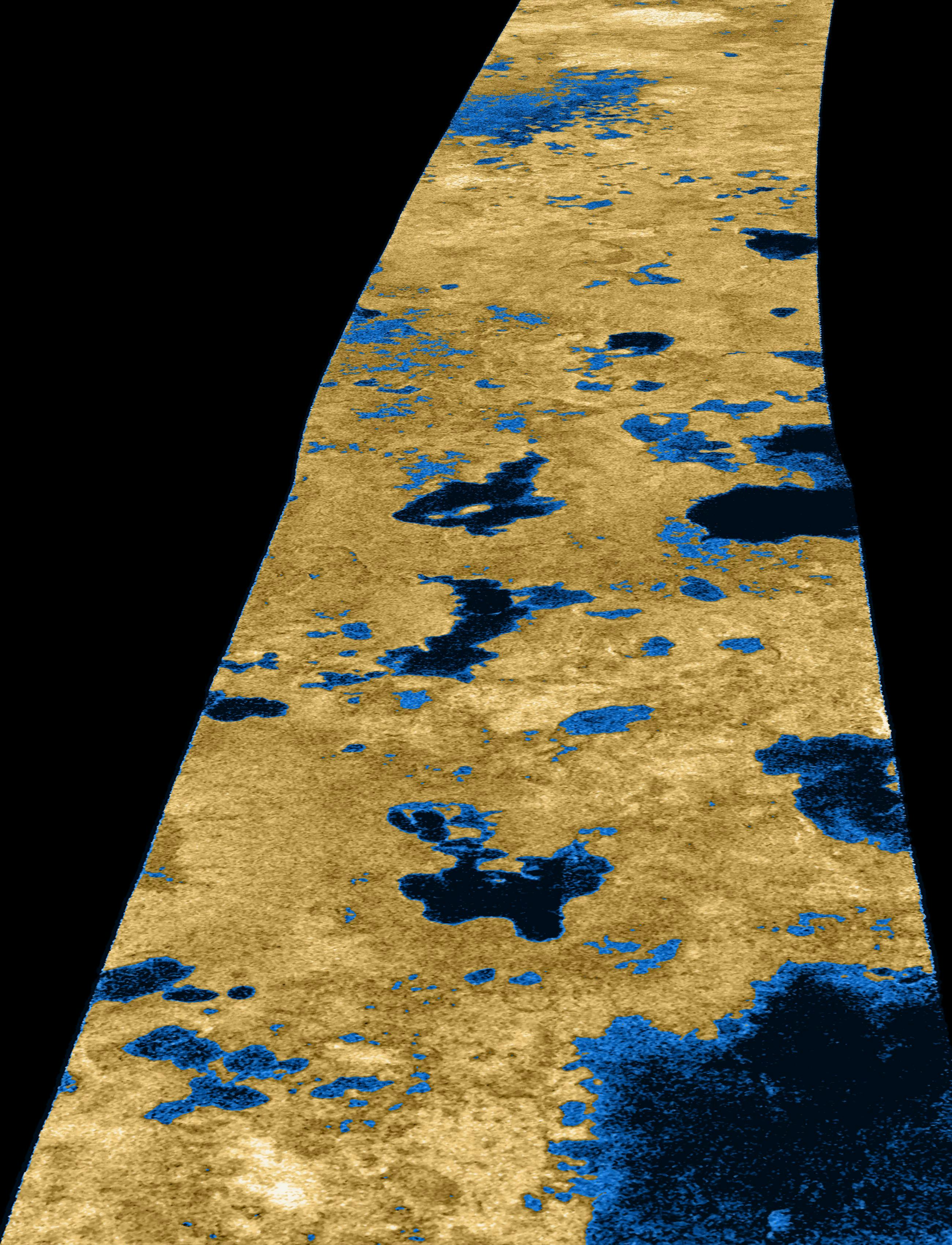
Methane is a simple hydrocarbon — one carbon atom bound to four hydrogen atoms — but these bonds are broken by ultraviolet light in Titan’s upper atmosphere. “The molecules recombine to form very complex carbon chain molecules, and these aggregate in the atmosphere,” Turtle says.
These aggregates form the thick, apricot haze that made it so difficult for the Voyager spacecraft to image Titan in visible light spectra during their flybys in 1980 and 1981, but they also precipitate out onto the moon’s surface. In places where impact craters have melted the surface ice, these complex molecules may have mixed with that meltwater in a prebiotic soup similar to the mix thought to have preceded ancient life on Earth.
“You've got all of the ingredients we know are necessary for life as we know it,” Turtle says. “You've got energy, you've got warm water, and you've got organic material, and it just has been mixing on the surface.”
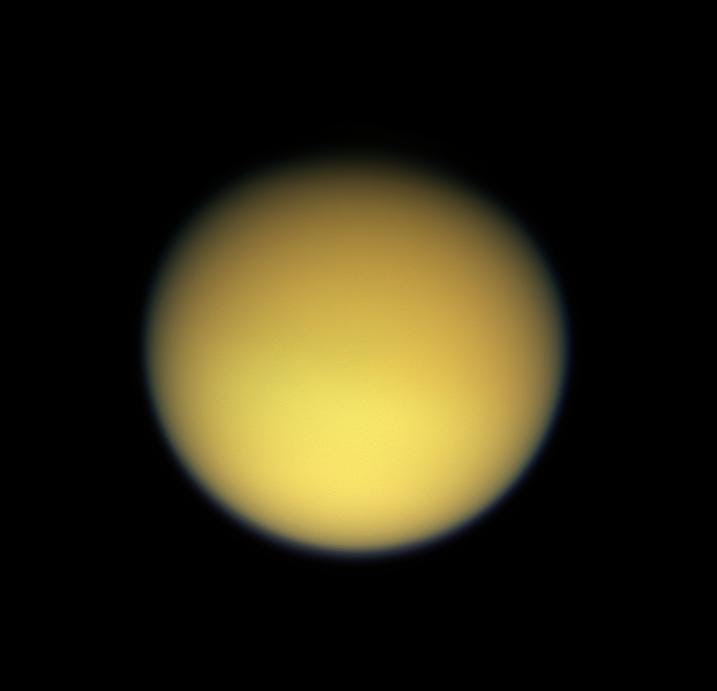
Is there life on Titan?
Titan has many of the ingredients thought to be necessary for the transition from chemistry to early biologies to occur, such as complex, self-replicating molecules. Still, it’s not yet clear whether that transition has or even could occur on the icy moon.
“Dragonfly is primarily a prebiotic mission. We really want to understand what chemistry can happen when you put all these ingredients together,” Turtle says. “We don't have any reason to believe that biological systems are going to be terribly happy at 94 Kelvin.”
So while mission scientists can’t rule out primitive life in the hydrocarbon lakes or slush on Titan’s surface, or even in the liquid water ocean believed to exist beneath its icy crust, “we'd be remiss on Titan, if we didn't at least look for chemical signatures that would be indicative of biological control of a system instead of abiotic control,” Turtle says.
Observations from Cassini released in 2017 showed that Titan contained a chemical called vinyl cyanide that could be used as cell membranes for exotic life forms.

Dragonfly will sample Titan’s surface and look for telltale signs of biological activity, such as a smooth distribution of the masses of molecules in the sample. Life, Turtle says, tends to focus its energies in particular areas, so “you would see peaks and then you would see gaps” in the spectrum of sampled compounds.
Another telltale sign would be an imbalance in chirality, the handedness of sampled compounds, she adds. Organic compounds naturally occur in structures that are mirror images of each other, but biological systems only use or produce the left or right-handed version.
“We're really a chemistry mission, and we don't have reason to expect there to be biological processes on Titan,” Turtle says, “But we can't say for sure that the chemistry didn't take that step at some point.”
What would it be like to walk on Titan?
It would be cold, and the air would kill you if you breathed it, but a walk on Titan wouldn’t feel altogether unfamiliar.
“It's pretty easy to visualize being able to walk around on the surface of Titan,” Turtle says. Sunlight reaching Titan is about 100 times fainter than the light reaching Earth, so “it would look at about the brightness of a full moon here on Earth,” she says. There would be a reddish hue to everything due to the atmosphere, diffusing light on a cloudy day.
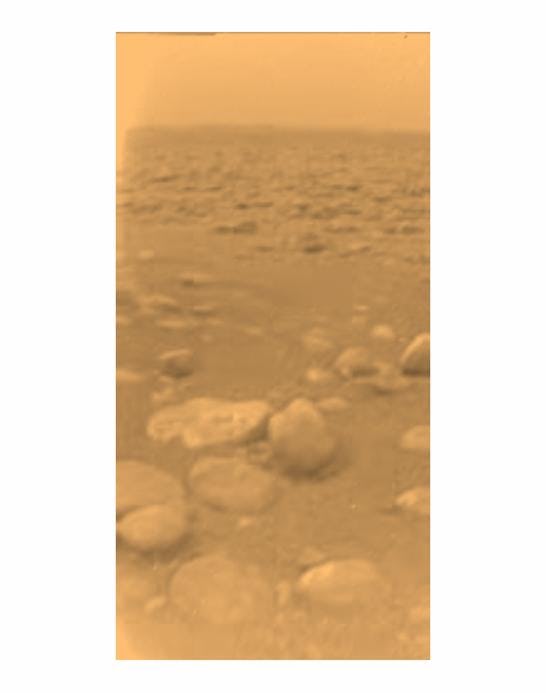
“If you could see a rainbow on Titan, you’d actually see gaps in it,” Turtle says, as some wavelengths of light wouldn’t reach the surface due to absorption by methane in the atmosphere.
And you might have to wait a while to see one: Despite the methane cycle serving in place of the Earth’s water cycle, it doesn’t rain all that often on Titan. NASA’s Cassini spacecraft only saw two examples of methane rain on Titan in 13 years of watching the moon from 2004 to 2017.
“If you were at a place where it was raining, the raindrops would probably be pretty big, and they would fall at the same rate as snow on Earth,” Turtle says. “So it would be kind of weird.”
Weird, slow-motion raindrops floating down in a dim, reddish landscape. It would be fatal to remove your helmet to feel that rain on your face, but imagining for a moment that you could sample the air, what would Titan smell like?
“I think it would smell kind of like a gas station,” Turtle says, the methane and hydrocarbons there more resembling refined gasoline than something like natural gas, which gains its fart-like aroma from additives rather than the gas itself.
Similarly, the hydrocarbon lakes and seas on Titan’s surface would look dark in the distance or when pooled in great deep cisterns, “but they’d be clear in the shallow areas,” she says. “You'd be able to see down beneath the surface kind of the same way you do with water.”
What is the Dragonfly vehicle?
Dragonfly is a 1,200-pound, drone-like quadcopter/octocopter, using eight rotors in four pairs to fly from location to location on Titan’s surface.
“It’s about the size of the Perseverance rover, or Curiosity rover on Mars,” Turtle says.
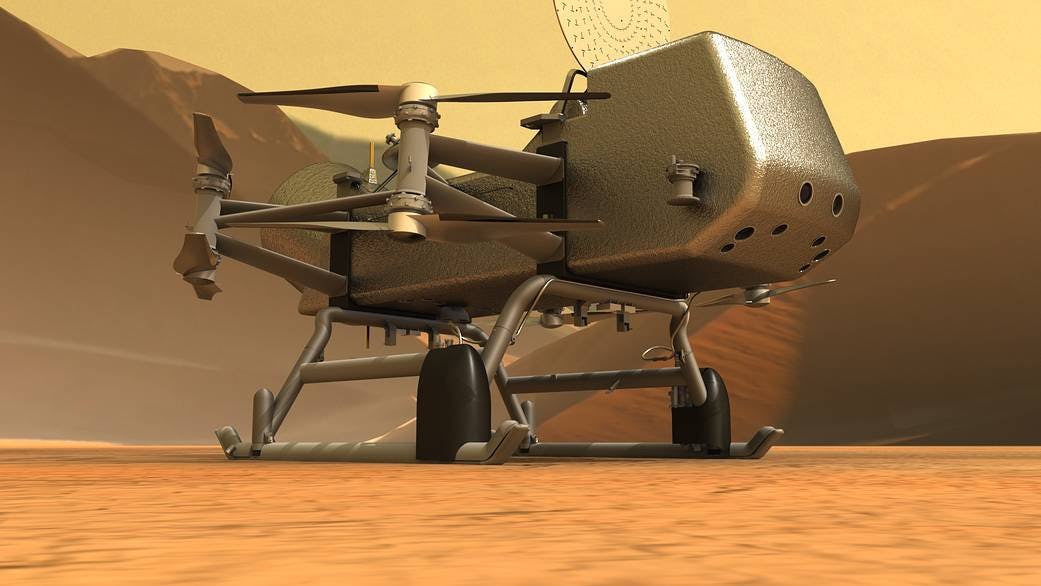
Like those rovers, Dragonfly will be powered by a multi-mission radioisotope thermoelectric generator (MMRTG), which harnesses the thermal energy of decaying plutonium to generate electricity and charge the Dragonfly’s battery, which will then power all mission activities. It’s a power source that will keep Dragonfly alive for at least three years and possibly longer. The Curiosity rover landed on Mars in August 2012 with a two-year mission plan, but is still operating on its MMRTG almost a decade later in 2021.
However, unlike the Mars rovers, Dragonfly has no wheels or treads for moving on the ground and will instead fly from place to place on Titan.
Why make Dragonfly a drone instead of a rover like Perseverance?
The primary reason for sending a flying machine to Titan rather than a rover is to increase the breadth of the science Dragonfly can do.
“We want to understand how the chemistry varies from place to place in these areas that have very different geologic histories, and we just wouldn't be able to drive that far,” Turtle says. She adds that Dragonfly is expected to cover up to around 180 kilometers over the three years of its mission. The Curiosity rover, by contrast, has only managed around 26 kilometers since 2012.
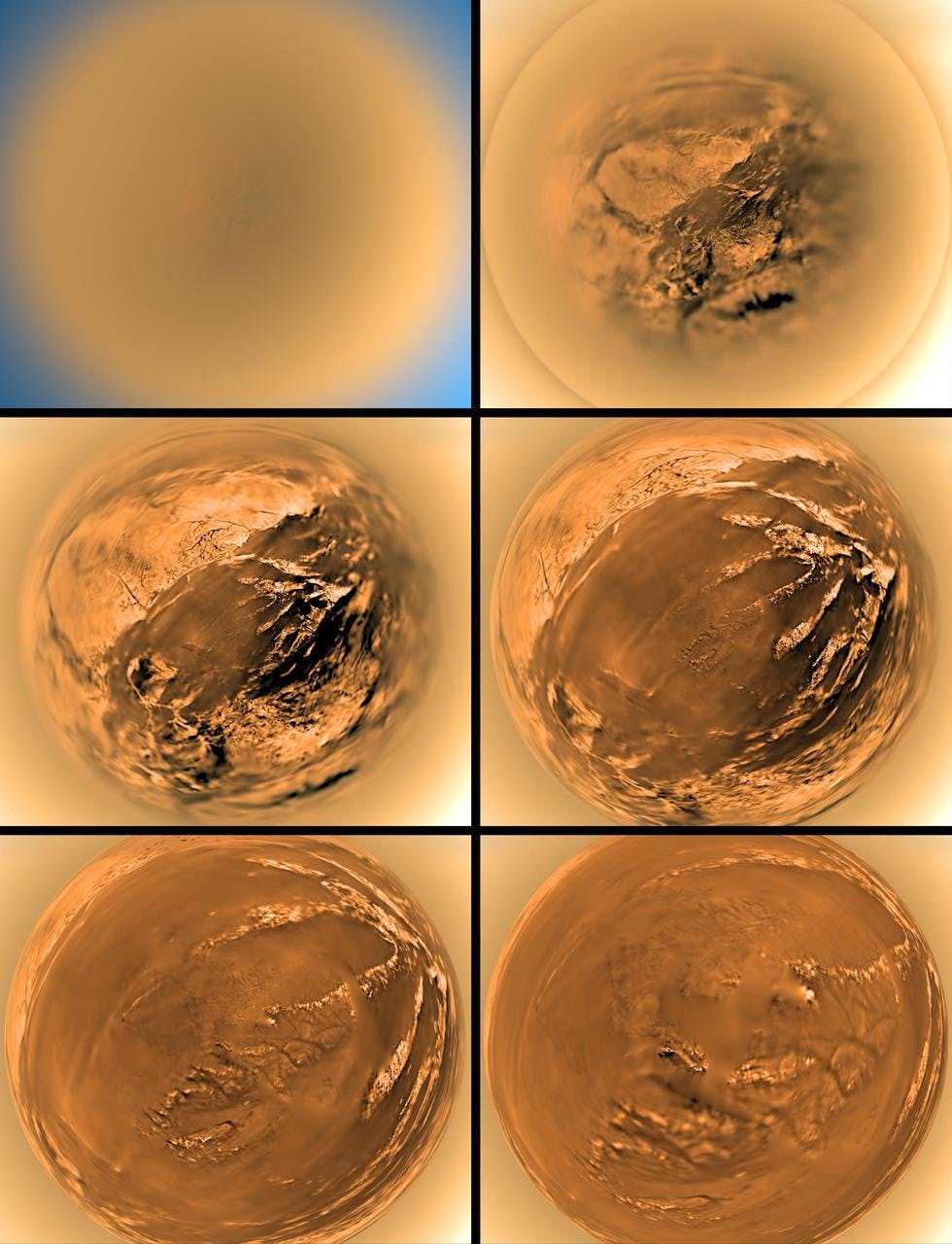
It helps that flight is easier on Titan than on Earth, given the lower gravity and denser air, and certainly easier than in the thin atmosphere of Mars. The Ingenuity helicopter, which descended to the Red Planet’s surface with the Perseverance rover, may have made history with the first controlled, powered flight on another world, but Dragonfly will soar longer and higher on Titan.
Sending a flying vehicle to explore another world comes with certain risks, such as what to do in the case of inclement weather.
Thankfully, according to Turtle, Titan’s unique properties may come to the rescue there as well. Not only does it rain very infrequently on Titan, but there is also very little wind, owing to its slow orbital dynamics, distance from the sun, and hazy atmosphere, which keep temperatures relatively constant from latitude to latitude.
“There’s not a lot of surface temperature variability driving winds,” Turtle says. “Titan, from a temperature dynamic perspective, is a little more boring, frankly. From a flight perspective, that’s okay.”
Dragonfly will do an autonomous pre-flight checklist and check the surrounding weather just in case, Turtle says, “and the flights are really short. Dragonfly will fly about once a month, once an Earth month, and the flights are less than an hour.”
Taking a cue from Ingenuity, Dragonfly will scout out target locations itself, flying autonomously to image a potential new site, then returning to its origin to transmit the images and await instructions from Earth.
“I'm sure there will be a lot of animated discussions about where in these areas we want to focus our measurements,” Turtle says.
What instruments will Dragonfly carry?
Dragonfly will carry meteorological instruments, a seismometer, gamma-ray and neutron spectrometer, and a mass spectrometer, along with a full suite of cameras of varying resolutions.
The meteorological sensors on Dragonfly will allow scientists to measure temperatures, pressures, methane levels, and humidity, among other variables, in order to better profile the moon’s lower atmosphere, sampling the air at ground level and in flight.
The seismometer is designed primarily to measure how seismically active Titan is, rather than to detect the moon’s internal structure as NASA’s InSight mission has done for Mars, Turtle says, but Titan might surprise the science team. “If there are lots of large nearby earthquakes, then those will be great signals to interpret the subsurface structure,” she says.
The gamma-ray and neutron spectrometer will give scientists the bulk composition of material beneath Dragonfly, distinguishing between water ice and organic material for instance.
But the mass spectrometer will be the main astrobiological instrument, Turtle says, measuring the composition of Titan samples taken with Dragonfly’s two rotary percussive drills. “Among the things that I get really excited about with Dragonfly is that we can do these really detailed compositional measurements,” she says.
Dragonfly won’t just take spectral data of Titan’s surface. It will be taking photos with its eight cameras: high-resolution cameras for imaging areas for sampling, medium resolution cameras covering the front and area underneath the lander, and two cameras mounted on the articulated high-gain antenna. “We can use that articulation to point the cameras,” Turtle says. “And so those cameras we can use to build up a panorama, 360 degrees around the lander on the surface.”
Dragonfly will also include LEDs creating visible and ultraviolet light, the first to illuminate Titan’s surface for spectral information about Titan, the latter to aid in the search for organic compounds, some of which fluoresce if illuminated with ultraviolet light.
“So we also plan to have ultraviolet LEDs to see if there are different organics on Titan's surface that glow different colors at night,” Turtle says. “That would be really sweet.”
How have other NASA missions informed Dragonfly?
“Every mission can learn from any other mission,” Turtle says, and Dragonfly is no exception. Certainly, the Voyager flybys and subsequent Cassini mission inspired further study of Titan, while the Huygens lander, which landed on the moon in 2005, is a direct antecedent.
“And of course, there’s a lot we’ve learned from the Perseverance rover,” Turtle says, “from getting to watch the Ingenuity helicopter flying on Mars.”
Technically speaking, she adds, “One of the things that's enabling for Dragonfly is that we haven't really needed to invent anything.”
Whether it’s mass spectrometer design or autonomous navigation with drone-like rotorcraft, Dragonfly can take the best commercial and NASA technology development solutions from the past decades and apply them to problems in different situations.
“That's really where the innovation of Dragonfly lies,” Turtle says, in “the application to the Titan environments of existing technology.”







